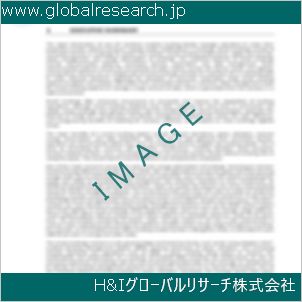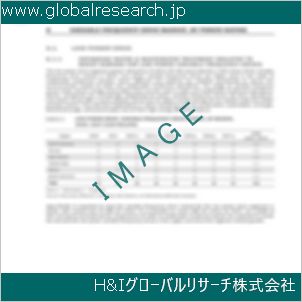Table of Contents
1 Industry Overview of Lithium Metal
1.1 Definition and Specifications of Lithium Metal
1.1.1 Definition of Lithium Metal
1.1.2 Specifications of Lithium Metal
1.2 Classification of Lithium Metal
1.3 Applications of Lithium Metal
1.3.1 Nuclear Application
1.3.2 Non-Nuclear Application
1.4 Industry Chain Structure of Lithium Metal
1.5 Industry Overview and Major Regions Status of Lithium Metal
1.5.1 Industry Overview of Lithium Metal
1.5.2 Global Major Regions Status of Lithium Metal
1.6 Industry Policy Analysis of Lithium Metal
1.7 Industry News Analysis of Lithium Metal
2 Manufacturing Cost Structure Analysis of Lithium Metal
2.1 Raw Material Suppliers and Price Analysis of Lithium Metal
2.2 Equipment Suppliers and Price Analysis of Lithium Metal
2.3 Labor Cost Analysis of Lithium Metal
2.4 Other Costs Analysis of Lithium Metal
2.5 Manufacturing Cost Structure Analysis of Lithium Metal
2.6 Manufacturing Process Analysis of Lithium Metal
3 Technical Data and Manufacturing Plants Analysis of Lithium Metal
3.1 Capacity and Commercial Production Date of Global Lithium Metal Major Manufacturers in 2023
3.2 Manufacturing Plants Distribution of Global Lithium Metal Major Manufacturers in 2023
3.3 R&D Status and Technology Source of Global Lithium Metal Major Manufacturers in 2023
3.4 Raw Materials Sources Analysis of Global Lithium Metal Major Manufacturers in 2023
4 Capacity, Production and Revenue Analysis of Lithium Metal by Regions, Types and Manufacturers
4.1 Global Capacity, Production and Revenue of Lithium Metal by Regions 2019-2024
4.2 Global and Major Regions Capacity, Production, Revenue and Growth Rate of Lithium Metal 2019-2024
4.3 Global Capacity, Production and Revenue of Lithium Metal by Types 2019-2024
4.4 Global Capacity, Production and Revenue of Lithium Metal by Manufacturers 2019-2024
5 Price, Cost, Gross and Gross Margin Analysis of Lithium Metal by Regions, Types and Manufacturers
5.1 Price, Cost, Gross and Gross Margin Analysis of Lithium Metal by Regions 2019-2024
5.2 Price, Cost, Gross and Gross Margin Analysis of Lithium Metal by Types 2019-2024
5.3 Price, Cost, Gross and Gross Margin Analysis of Lithium Metal by Manufacturers 2019-2024
6 Consumption Volume, Consumption Value and Sale Price Analysis of Lithium Metal by Regions, Types and Applications
6.1 Global Consumption Volume and Consumption Value of Lithium Metal by Regions 2019-2024
6.2 Global and Major Regions Consumption Volume, Consumption Value and Growth Rate of Lithium Metal 2019-2024
6.3 Global Consumption Volume and Consumption Value of Lithium Metal by Types 2019-2024
6.4 Global Consumption Volume and Consumption Value of Lithium Metal by Applications 2019-2024
6.5 Sale Price of Lithium Metal by Regions 2019-2024
6.6 Sale Price of Lithium Metal by Types 2019-2024
6.7 Sale Price of Lithium Metal by Applications 2019-2024
6.8 Market Share Analysis of Lithium Metal by Different Sale Price Levels
7 Supply, Import, Export and Consumption Analysis of Lithium Metal
7.1 Supply, Consumption and Gap of Lithium Metal 2019-2024
7.2 Global Capacity, Production, Price, Cost, Revenue, Supply, Import, Export and Consumption of Lithium Metal 2019-2024
7.3 USA Capacity, Production, Price, Cost, Revenue, Supply, Import, Export and Consumption of Lithium Metal 2019-2024
7.4 EU Capacity, Production, Price, Cost, Revenue, Supply, Import, Export and Consumption of Lithium Metal 2019-2024
7.5 China Capacity, Production, Price, Cost, Revenue, Supply, Import, Export and Consumption of Lithium Metal 2019-2024
7.6 Japan Capacity, Production, Price, Cost, Revenue, Supply, Import, Export and Consumption of Lithium Metal 2019-2024
8 Major Manufacturers Analysis of Lithium Metal
8.1 Manufacturer One
8.1.1 Company Profile
8.1.2 Product Picture and Specifications
8.1.2.1 Type I
8.1.2.2 Type II
8.1.2.3 Type III
8.1.3 Capacity, Production, Price, Cost, Gross and Revenue
8.1.4 Contact Information
8.2 Manufacturer Two
8.2.1 Company Profile
8.2.2 Product Picture and Specifications
8.2.2.1 Type I
8.2.2.2 Type II
8.2.2.3 Type III
8.2.3 Capacity, Production, Price, Cost, Gross and Revenue
8.2.4 Contact Information
8.3 Manufacturer Three
8.3.1 Company Profile
8.3.2 Product Picture and Specifications
8.3.2.1 Type I
8.3.2.2 Type II
8.3.2.3 Type III
8.3.3 Capacity, Production, Price, Cost, Gross and Revenue
8.3.4 Contact Information
8.4 Manufacturer Four
8.4.1 Company Profile
8.4.2 Product Picture and Specifications
8.4.2.1 Type I
8.4.2.2 Type II
8.4.2.3 Type III
8.4.3 Capacity, Production, Price, Cost, Gross and Revenue
8.4.4 Contact Information
8.5 Manufacturer Five
8.5.1 Company Profile
8.5.2 Product Picture and Specifications
8.5.2.1 Type I
8.5.2.2 Type II
8.5.2.3 Type III
8.5.3 Capacity, Production, Price, Cost, Gross and Revenue
8.5.4 Contact Information
…
9 Marketing Trader or Distributor Analysis of Lithium Metal
9.1 Marketing Channels Status of Lithium Metal
9.2 Traders or Distributors with Contact Information of Lithium Metal by Regions
9.3 Ex-work Price, Channel Price and End Buyer Price Analysis of Lithium Metal
9.4 Regional Import, Export and Trade Analysis of Lithium Metal
10 Industry Chain Analysis of Lithium Metal
10.1 Upstream Major Raw Materials Suppliers Analysis of Lithium Metal
10.1.1 Major Raw Materials Suppliers with Contact Information Analysis of Lithium Metal
10.1.2 Major Raw Materials Suppliers with Supply Volume Analysis of Lithium Metal by Regions
10.2 Upstream Major Equipment Suppliers Analysis of Lithium Metal
10.2.1 Major Equipment Suppliers with Contact Information Analysis of Lithium Metal
10.2.2 Major Equipment Suppliers with Product Pictures Analysis of Lithium Metal by Regions
10.3 Downstream Major Consumers Analysis of Lithium Metal
10.3.1 Major Consumers with Contact Information Analysis of Lithium Metal
10.3.2 Major Consumers with Consumption Volume Analysis of Lithium Metal by Regions
10.4 Supply Chain Relationship Analysis of Lithium Metal
11 Development Trend of Analysis of Lithium Metal
11.1 Capacity, Production and Revenue Forecast of Lithium Metal by Regions and Types
11.1.1 Global Capacity, Production and Revenue of Lithium Metal by Regions 2024-2029
11.1.2 Global and Major Regions Capacity, Production, Revenue and Growth Rate of Lithium Metal 2024-2029
11.1.3 Global Capacity, Production and Revenue of Lithium Metal by Types 2024-2029
11.2 Consumption Volume and Consumption Value Forecast of Lithium Metal by Regions, Types and Applications
11.2.1 Global Consumption Volume and Consumption Value of Lithium Metal by Regions 2024-2029
11.2.2 Global and Major Regions Consumption Volume, Consumption Value and Growth Rate of Lithium Metal 2024-2029
11.2.3 Global Consumption Volume and Consumption Value of Lithium Metal by Types 2024-2029
11.2.4 Global Consumption Volume and Consumption Value of Lithium Metal by Applications 2024-2029
11.3 Supply, Import, Export and Consumption Forecast of Lithium Metal
11.3.1 Supply, Consumption and Gap of Lithium Metal 2024-2029
11.3.2 Global Capacity, Production, Price, Cost, Revenue, Supply, Import, Export and Consumption of Lithium Metal 2024-2029
11.3.3 USA Capacity, Production, Price, Cost, Revenue, Supply, Import, Export and Consumption of Lithium Metal 2024-2029
11.3.4 EU Capacity, Production, Price, Cost, Revenue, Supply, Import, Export and Consumption of Lithium Metal 2024-2029
11.3.5 China Capacity, Production, Price, Cost, Revenue, Supply, Import, Export and Consumption of Lithium Metal 2024-2029
11.3.6 Japan Capacity, Production, Price, Cost, Revenue, Supply, Import, Export and Consumption of Lithium Metal 2024-2029
12 New Project Investment Feasibility Analysis of Lithium Metal
12.1 New Project SWOT Analysis of Lithium Metal
12.2 New Project Investment Feasibility Analysis of Lithium Metal
13 Conclusion of the Global Lithium Metal (CAS 7439-93-2) Industry 2024 Market Research Report
| ※参考情報 リチウム金属は、周期表の3番目に位置するアルカリ金属で、化学式はLiです。リチウムは、地殻中では非常に少ない元素ではありますが、軽量で高いエネルギー密度を持つため、様々な分野で利用されています。リチウム金属自体は、銀白色の光沢を持ち、軟らかく、非常に反応性の高い金属です。室温では固体ですが、比較的低い温度で融解し、融点は約180.5℃です。リチウムは、自然界では主に鉱鉱や塩湖から採取されます。 リチウム金属の主な特徴の一つは、その軽さです。リチウムの比重は約0.53g/cm³で、金属の中でも最も軽い部類に入ります。この軽量性は、航空宇宙産業における材料選択において特に重要です。また、リチウムには高い電気伝導性があり、電気化学的な特性からも注目されています。リチウム金属は酸化しやすいため、空気や水分を避けて保存する必要があります。このため、リチウムを扱う際には、安全対策が不可欠です。 リチウム金属の種類については、基本的に純粋なリチウム金属がありますが、鋳造された製品としてはバルクリチウムや、薄膜状のリチウムなども存在します。これらは主に、次世代のバッテリー技術や電子機器のカスタムアプリケーションに利用され、特に電池材料としての需要が高まっています。 リチウム金属の用途は非常に多岐にわたりますが、最も注目されるのはリチウムイオンバッテリーの製造です。リチウムイオンバッテリーは、スマートフォン、ノートパソコン、電気自動車など、さまざまな電子機器に使用されており、エネルギー密度が高く、長寿命で充電時間も短縮できるため、非常に人気があります。リチウム金属を使用することで、バッテリーのエネルギー密度を大幅に向上させることが可能となり、電力供給の効率化に大きく貢献しています。 さらに、リチウム金属は医薬品の分野でも利用されています。特に、精神疾患の治療において、リチウム塩が使用されることがあります。これは、躁うつ病の治療において有効性があるとされ、リチウムが中枢神経系に影響を与えることから来ています。 関連技術としては、リチウム金属の新たな利用方法を模索する研究が進行中です。これには、固体電池の開発が含まれます。従来の液体電解質を使用せず、固体電解質を用いることで、安全性を高めつつ、より高いエネルギー密度を実現しようという試みです。また、リチウム金属の酸化による劣化問題を軽減し、バッテリー寿命を延ばすための技術も研究されています。例えば、ナノ構造材料や保護膜の使用が提案されており、これによりリチウム金属の反応性を抑えることが期待されています。 リチウム金属の環境への影響についても無視できません。リチウムを大量に採掘することが環境に与える影響や、リチウムイオンバッテリーの廃棄処理の問題も議論されており、リサイクル技術の開発が求められています。リチウムを再利用する手法や、リチウムの代替材料を探索する研究が進んでおり、持続可能な社会づくりに向けた取り組みがなされています。 このように、リチウム金属は多くの分野で重要な役割を果たしており、その特性を活かした様々な技術が進展しています。これからもリチウム金属の需要は高まっていくことが考えられ、持続可能な利用方法の確立が注目されるでしょう。リチウム金属の特性とその関連技術に関する理解を深めていくことが、今後の技術革新や社会の発展に寄与することが求められています。 |
❖ 免責事項 ❖
http://www.globalresearch.jp/disclaimer












